Through The Killing Fields to Camp 20, Slovenia
Zagan the motorhome’s high in Kočevski Rog, a remote forest area in southern Slovenia. We’re in the car park at Base 20, the once-secret political command base of the partisan force here during World War 2 (N45.69696, E15.04936). The guide, who speaks German, kindly explained to us “you’re guests of the Dolenjska Museum, your visit to the base is free and of course you can sleep here tonight”. OK, we’re pretty sure that’s what he said, followed by “if anyone comes and questions why you’re sleeping here, tell them I told you that you can stay”. We thanked him as best we could and retreated to Zagan, as we’d already visited the base when we went to ask him how we can pay the entrance fee. Ju and Charlie are asleep as I write this, as they had no sleep last night.
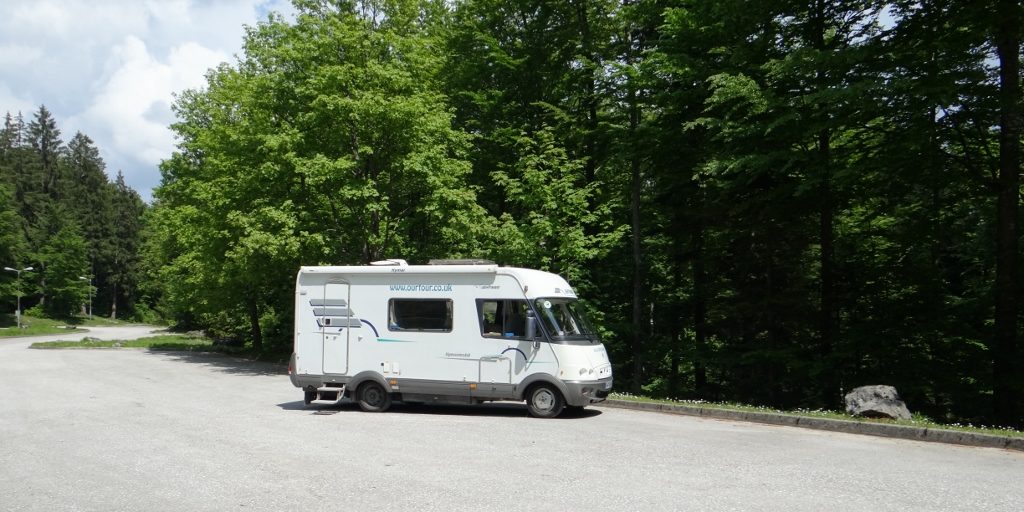
Zagan at Base 20, Rog, Slovenia
It’s been a long 24 hours folks, hence the monster blog post. I’m amazed our internet kit is getting any kind of signal up here.
Yesterday while out walking the town, Charlie seemed to snuffle something he shouldn’t have. He had his face in some grass, and came out wheezing a little. This isn’t all that unusual, as he’s a relentless, tasteless scavenger, and will eat anything (except lettuce). Neither of us could see that he’d managed to munch anything this time though, and wondered if he’d gotten something up his nose. A field inspection revealed nothing, so we headed back to Zagan to get him some water and look closer.
In the afternoon he was having some trouble breathing, but nothing major. He once breathed in a pencil-length piece of grass up one nostril, all the way in, so none of it could be seen. This creating a similar result which lasted two days until he sneezed it slightly out into daylight. Having endured that episode, we weren’t too worried. However, he couldn’t sleep last night, wide-eyed as he wheezed and grunted, and Ju stayed up with him all night. In the morning we headed to a vets we’d seen in Kočevje.
We’ve now seen the inside of a vet’s office in at least six countries, and weren’t surprised to find this one looking at least as professional as those back home in the UK. The vet could see us immediately (this was at about 8am) and his assistant spoke good English and translated for us. After checking Charlie over, the vet diagnosed some kind of allergic reaction, which had caused some mucus to build up and his throat to contract. He gave Charlie’s butt an injection, and we have tablets to give him every 12 hours for the next few days. The vet had a fabulous manner about him, gently handling Charlie like his own. The cost was €25, which of course we couldn’t have been happier to pay. The meds have kicked in and, although he’s not quite 100% yet, the wee chap’s snoring away like a trooper. What caused it? We dunno.
Relieved, we nipped into Lidl to grab something for breakfast, brimmed off Zagan’s diesel tank (€1.06 a litre) and headed for Base 20. There was something on the route which interested us (me more than Ju to be honest): the mass burial grounds below Kren (a low peak in Rog’s forested hills). The road leading out of Kočevje looked dubious on our maps, a white road which we’d normally avoid, but there was no other way to Kren. While Satnav insisted this wasn’t a route to Base 20, huge brown tourist signs contradicted her and pointed down the white route, so off we went.

The route we took up to Kren and Base 20, Kočevski Rog, Slovenia
A bit of background: this area of Slovenia was pretty much uninhabited until the 14th century, when German-speaking folks called the Gottscheer moved in. 600 years later the second world war moved in, and they hauled themselves off to Austria, leaving over 40 villages empty. Italian occupiers burned these down to prevent partisans using them, once again returning Rog to almost-unoccupied forest. In doing so, they created a perfect area for the doing of things one might not want others to know about: first the establishment of a secret communist partisan headquarters, and later the mass murder of the anti-communist population forced to return from Austria by the British. Today we’ve seen evidence of both.
Quickly the tarmac narrowed on the white route, and slid into endless trees. Neither of us were quite sure where Kren was, or whether it would be in any way obvious on the road. Our eyes scanned the forest in a secondary hope we might see a bear, as there are a few hundred knocking about, but doubtful we’d see anything. Up and up, an easy road but for the fact the tarmac disappeared for the most of it, there were no barriers, it was single-track, we shared it with huge logging lorries, and we weren’t sure if at some point it might degrade to something we just couldn’t drive. Time on lengthy unsealed roads in Tunisia helped ease us along, but it wasn’t the easiest of drives in a big fat motorhome.
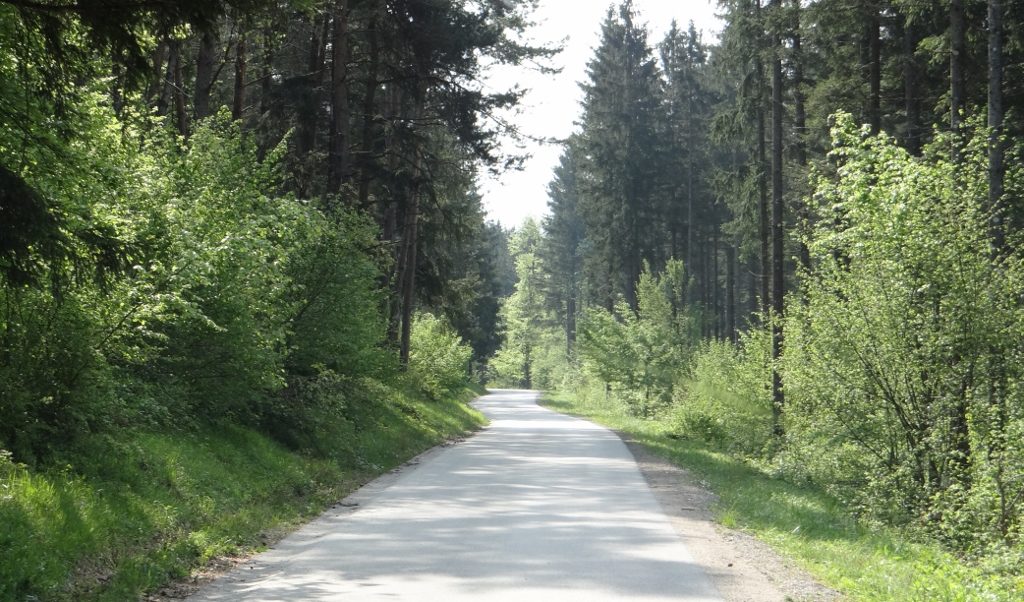
Bye bye tarmac, Kočevski Rog, Slovenia
A few miles in, tall carved wooden figures started to appear in the woods to our left. Morose faces marked the fact we were here, in the midst of a 70-year old killing field. In among the most serene calm, only birdsong breaking the silence once we’d stopped Zagan’s engine, tens of thousands of unarmed people had been murdered. It occurred to me the victims were trucked up here, and would have come up the same unsealed road we’d done. Us in comfort and freedom, them no doubt knowing the terror of what was to come.
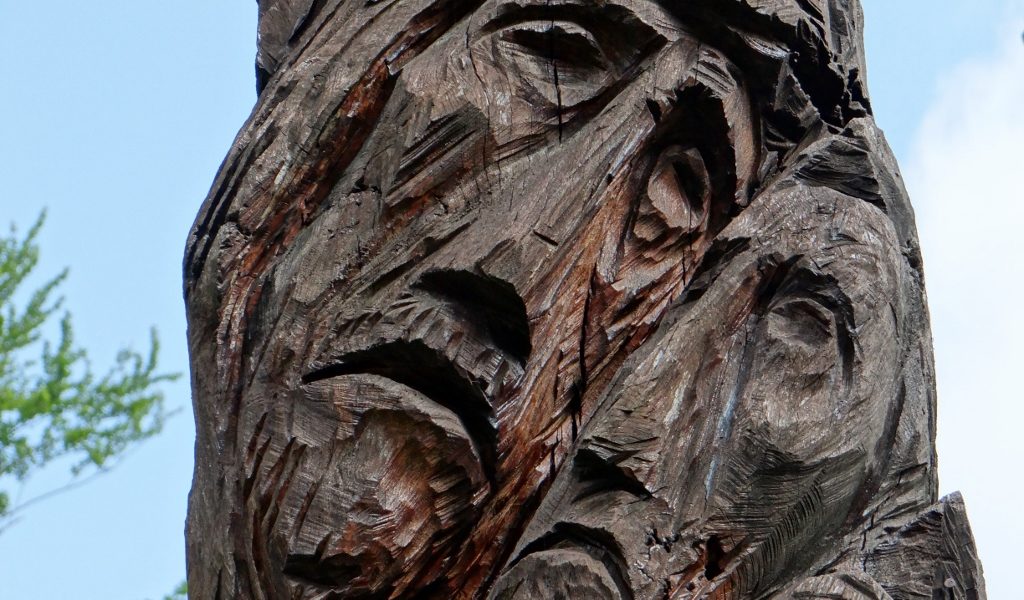
Wooden monuments to the dead of the Kočevski Rog massacres, Slovenia
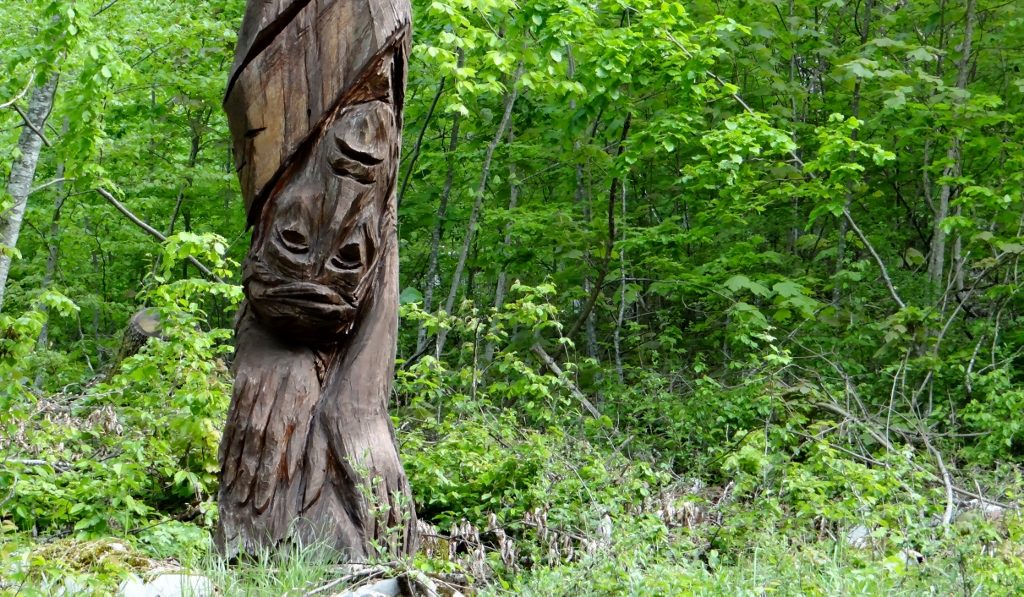
Wooden monuments to the dead of the Kočevski Rog massacres, Slovenia
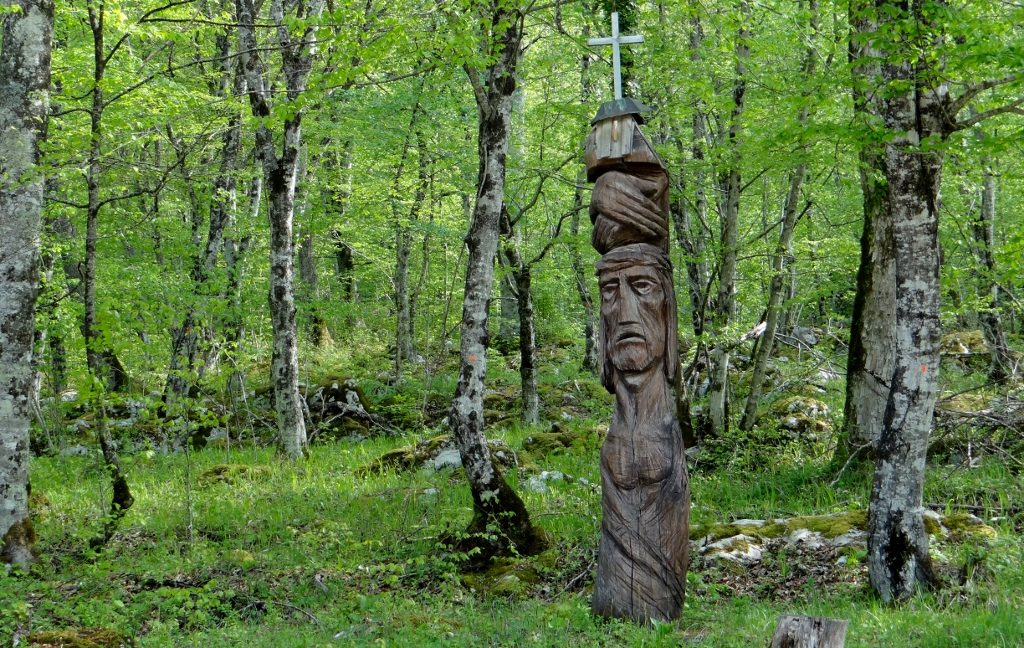
Wooden monuments to the dead of the Kočevski Rog massacres, Slovenia
A little further on a roadside information board and monument marked out one of the larger holes into which people had been shot and thrown, the one just below Kren (N45.66727, E14.93318). Ju’s seen enough of this stuff on our travels – of graveyards, massacres, destroyed villages and death camps – and stayed in Zagan to keep an eye on Charlie and try to catch up on a bit of sleep. I walked down the trail towards the pit, and a sense of foreboding descended on me. I reached the pit and stared in. What was once a deep natural cavern, is now a hollow in the ground after being sealed shut with dynamite on top of the dead and dying. It resembles an area of woodland near my home in the UK, called Black Rocks, a place I loved to walk and run through over the decades. I felt momentarily ill, recovered, took some photographs and walked away, my mind playing out a scene of unseen slaughter.
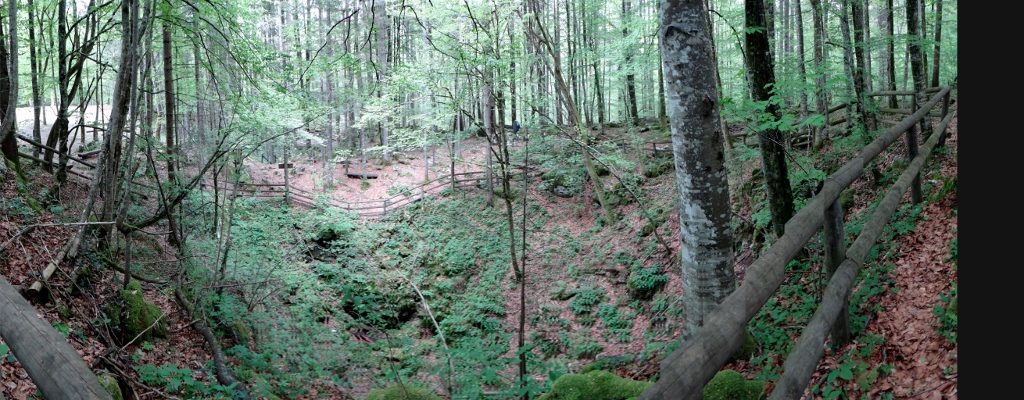
The Kren burial pit, Kočevski Rog, Slovenia
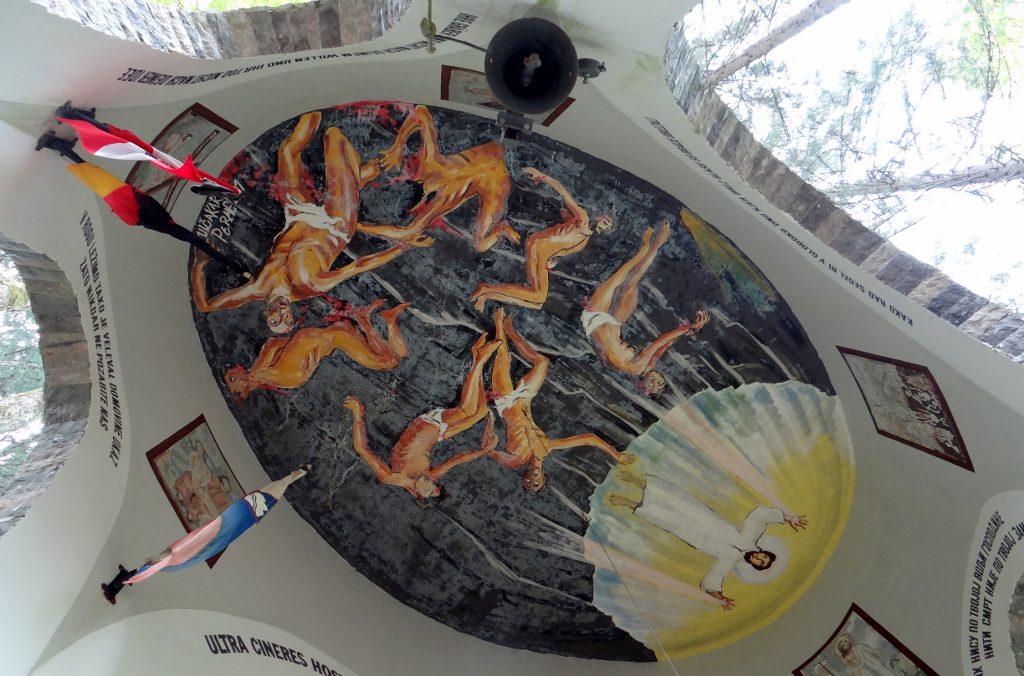
Monument at the Kren burial pit, Kočevski Rog, Slovenia
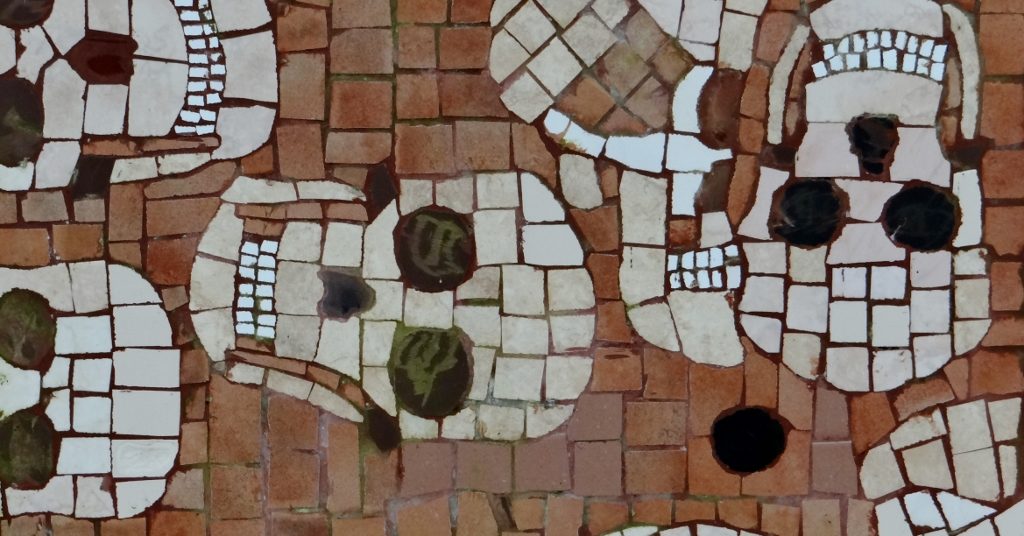
Mosaic at the Kren burial pit, Kočevski Rog, Slovenia. The bones of the victims remain untouched in these pits.
No-one knows quite who is in these holes in the earth, or how many people died there. There have been some surface searches which uncovered personal affects indicating they came from numerous nations – ranging from the USA to Russia – although they were mostly Slovenes murdered by Slovenes. Of the three huge pits, only two have ever been found. Of the thousands who died, only six survived, crawling bloodied out of the holes to reveal the awful truth once finally safely abroad.

Crosses and crucifixes found at the burial sites
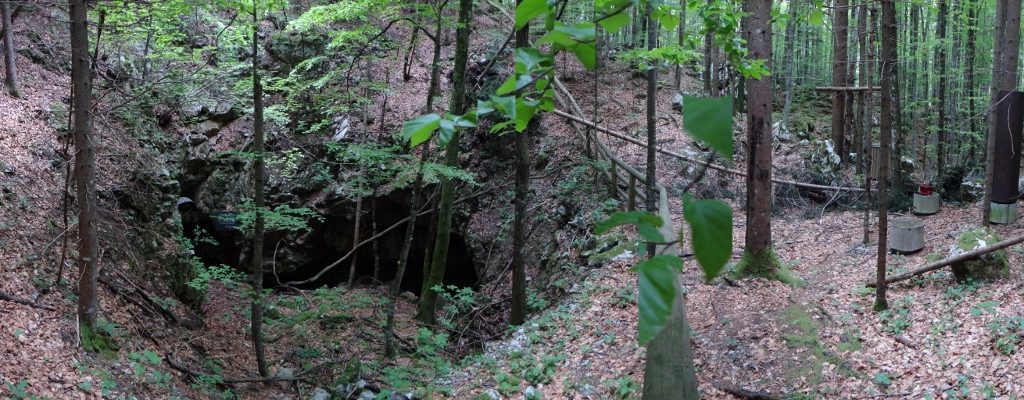
One pit where a handful of people managed to escape. Wounded, they managed to crawl into a side-cave when the entrance was mined several times. A tree fell across the entrance, allowing them to pull themselves out and flee. From their testimony, and estimated 2200 bodies were piled into this pit alone
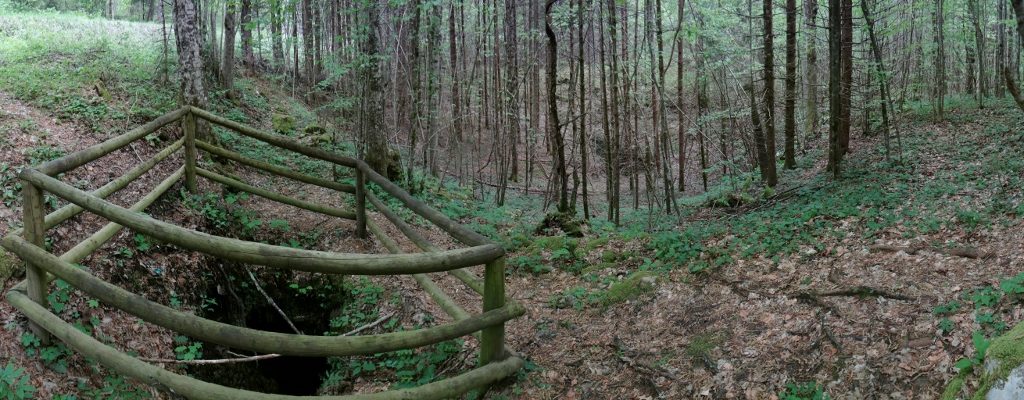
It seemed any hole in the ground would do. This one was a mere 10m from the road, and was left open
Every Slovene we’ve met has been helpful and kind to us. What must it be like for people here, to know their own kind were murdered by their own kind, thousands upon thousands of bones now lying jumbled high in the hills above their towns? Unimaginable to me. After stopping three times to read information boards (lots of English information) and look at different pits, we headed on in silence, pulling in to let an empty logging lorry past us.
A few miles of gravel later we caught said logging lorry up, being loaded and blocking the track. Hmmm. The track had also turned to mud. After a short deliberation we decided we were beat and Ju jumped out to find us somewhere we could reverse into to head back down the miles of track. Then a whistle came, and another. The lorry driver had spotted us, and waved us towards him, indicating the path was clear. Feeling sure he wouldn’t wave us on if the track was to turn impassable further on, we slipped back from reverse to first, and followed his truck, giving him the thumbs-up when he pulled over in a turning circle.
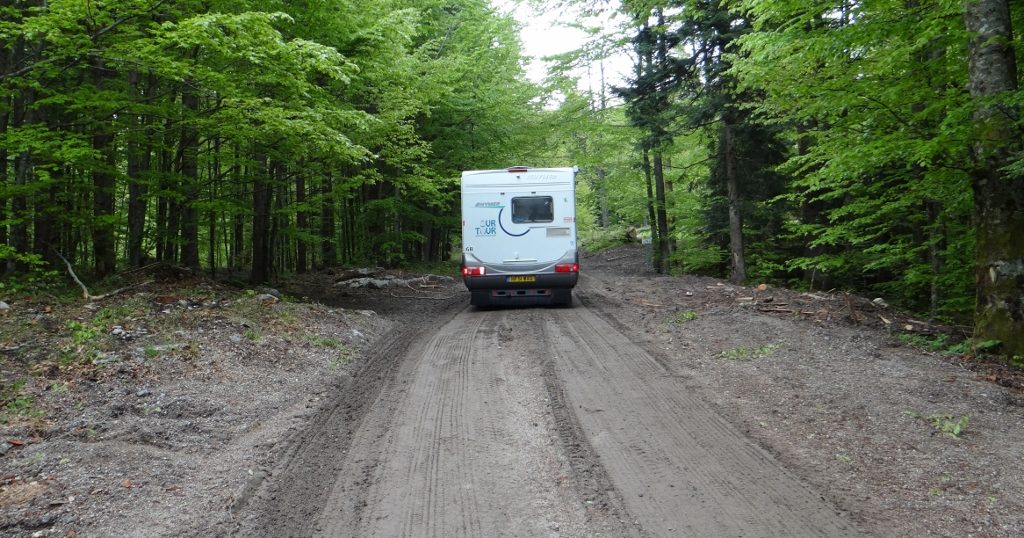
Reversing off the mud before our whistling saviour came to the rescue
All in we did about 20km of gravel road before hitting tarmac again just at the sign for Base 20, which pointed up hill, away from the welcoming town below. We’d read the buildings here were falling apart and the information boards were almost worn away, but we’d come this far. Turning right, we drove the last kilometre or two, both of us exclaiming with the excitement at seeing streetlights and a car park appear in the forest!
Base 20 was the, ah, 20th base built by the communist Slovene partisans as a political command base. First in the fight against Italian occupiers and later, when Italy surrendered in 1943, against the Germans. The base consists of small wooden huts, many of them hidden in depressions in the rock. The site was chosen for the fact it was (a) in Rog, which is effectively nowhere (b) close to a road, so could be supplied and (c) was very well hidden. Even from a few meters away you can hardly see the buildings. Neither the Italians nor the Germans ever found it despite repeated attempts.
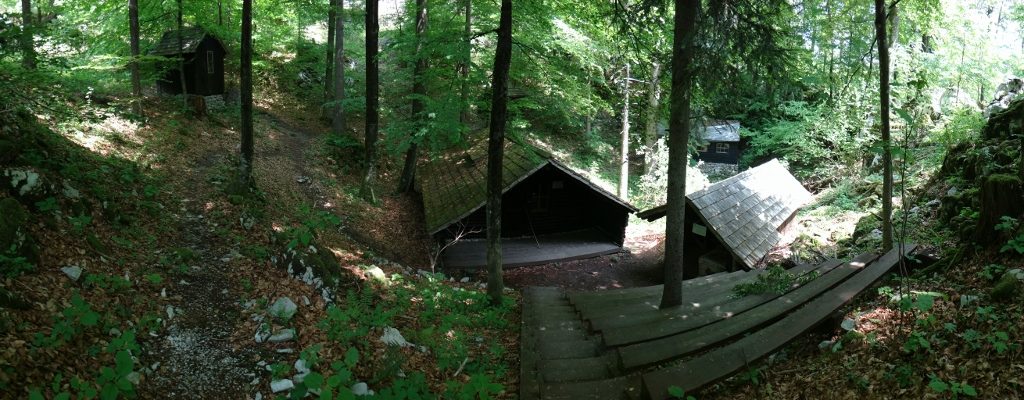
The first huts to be built at Base 20
The Slovenes, as we are discovering, are crafty. One trick they used ensured no winter footprints came from the snow-bound adjacent trail into the camp, by lowering a ladder onto which people working at the camp could climb. The ladder was horizontal in use, but wouldn’t touch the ground at the trail end so left no mark in the snow. It even had blankets slung under it, so any snow falling from the boots of those climbing across it wouldn’t disturb the fresh snow beneath. Decades later Slovenia again proved how wily they are, managing to extricate themselves from Yugoslavia with much less of a mess than Croatia and Bosnia had to deal with (a ten day war as opposed to four years), and finally handing them their own sovereignty.
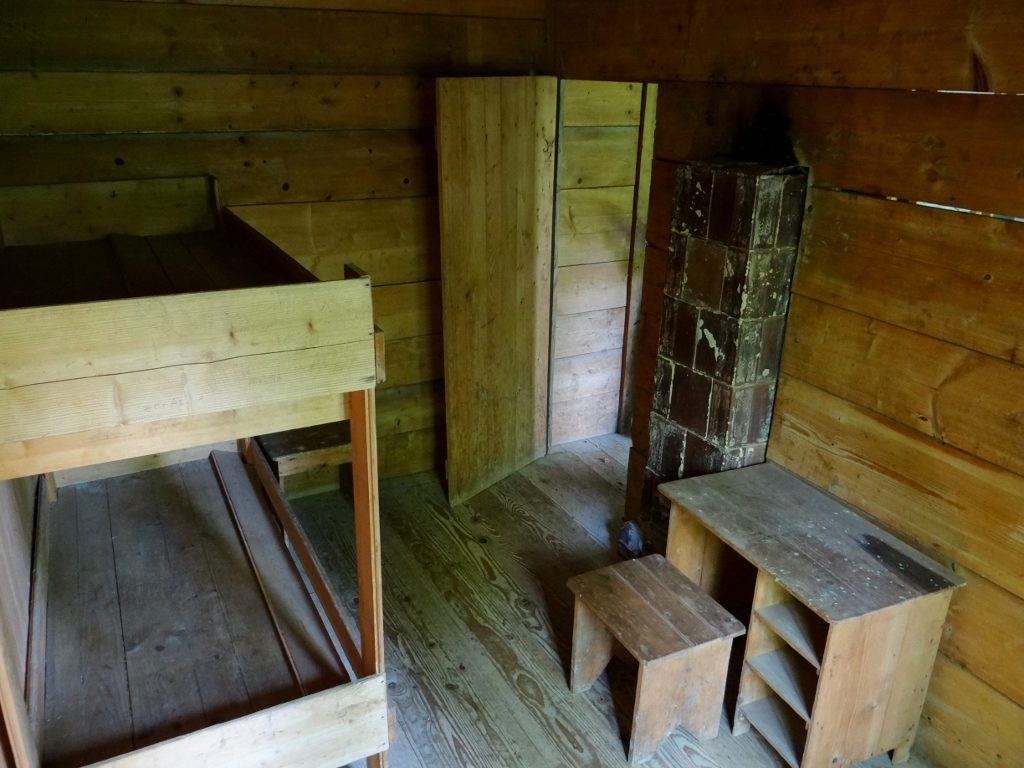
Basic digs for the political leaders of Tito’s communists in Slovenia
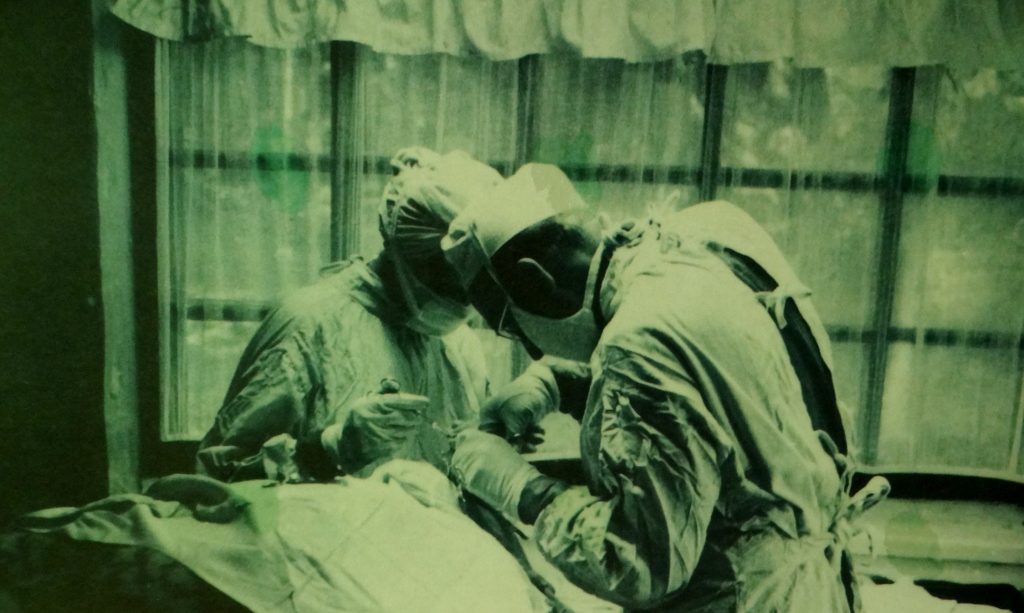
Fancy fighting superior forces for your country, getting badly injured and having to be operated on in a shed? Nah? Me neither
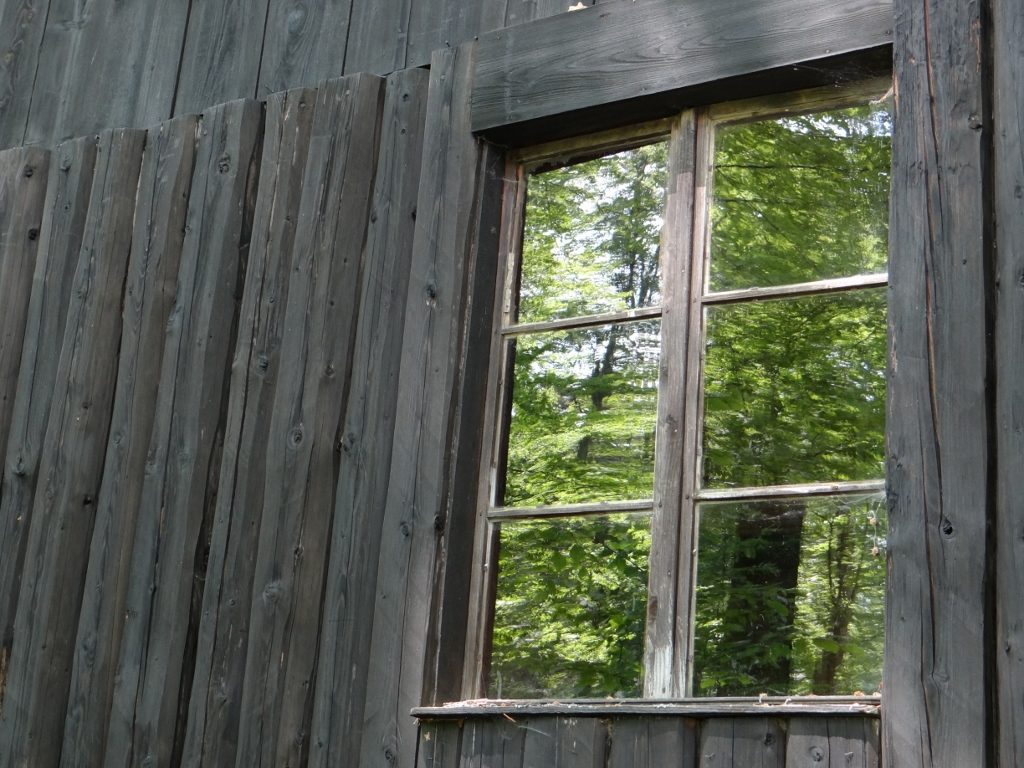
The windows from the original German-speakers before they were forced to move from the area were re-used at Base 20
Walking the camp it struck me what a severe life it would have been here, about 700m up in Rog. The buildings are tiny and cramped, and couldn’t be heated during the day due to the smoke. Serious surgery for hundreds of wounded soldiers was done on a dining table or bed, until a custom wooden table was finally made. They would have lived in constant fear of discovery and death. And yet they managed to create a fully-functional civil service up here, alongside hospitals, printing presses, schools and workshops. It is heroic.
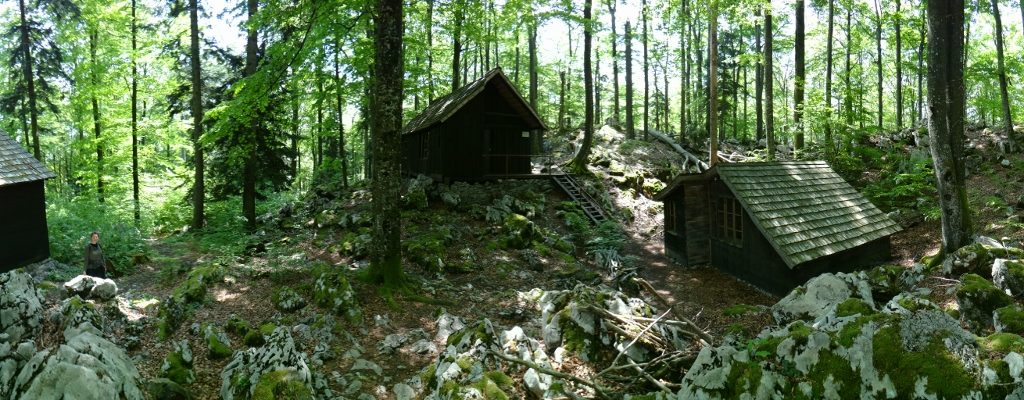
Base 20, Rog, Slovenia
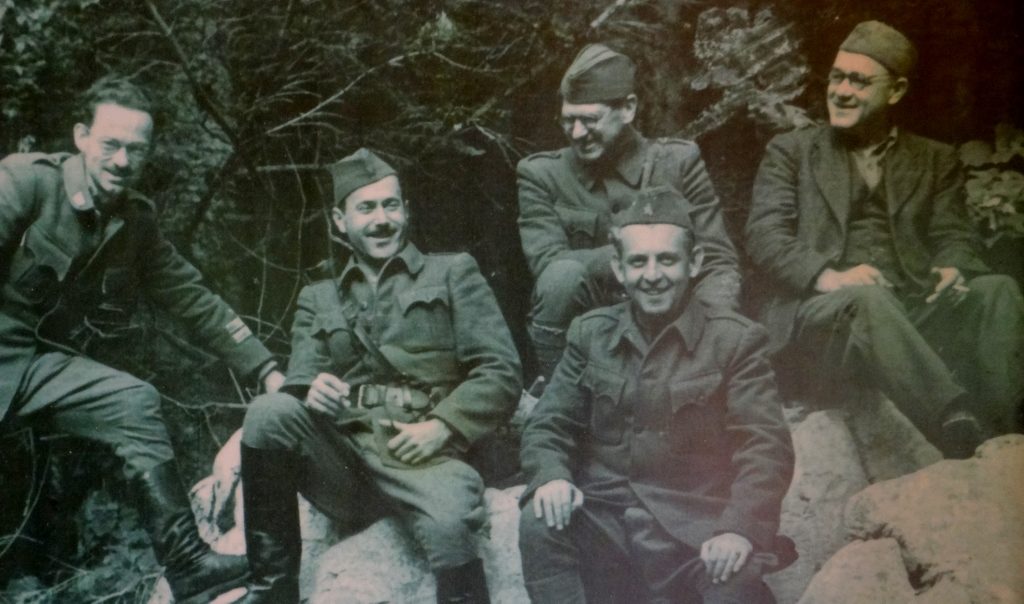
Communist Slovene partisans, World War 2
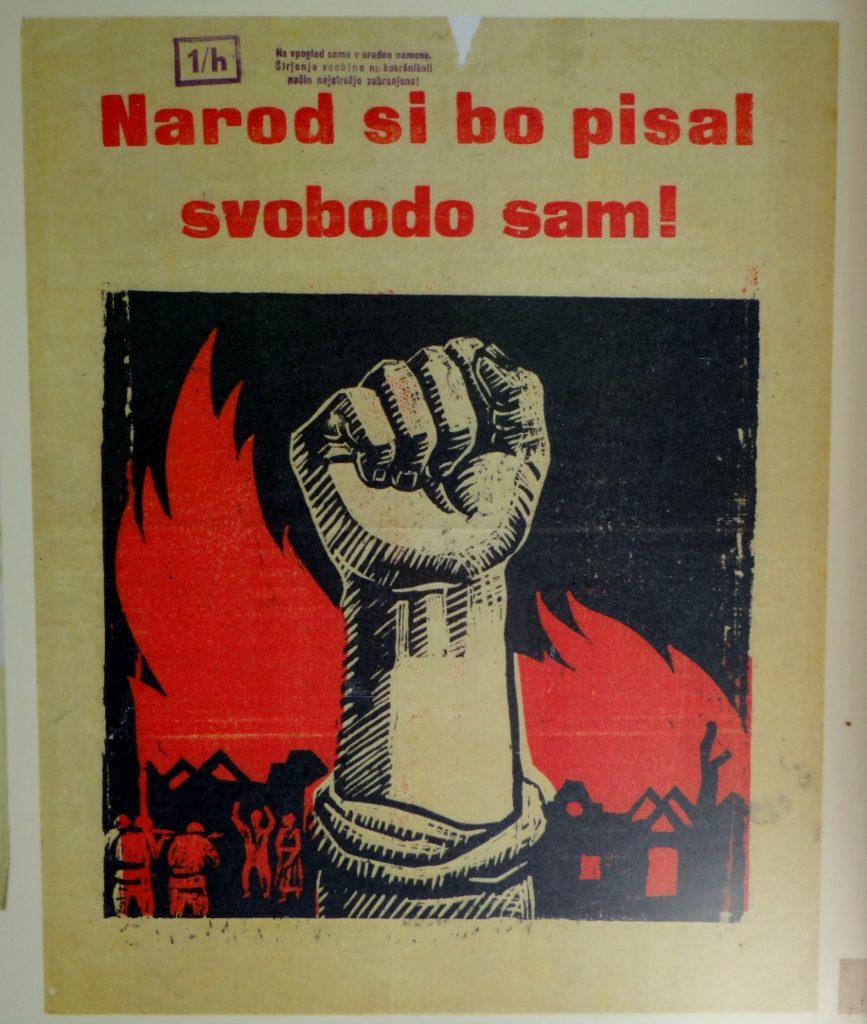
Poster at Camp 20, Rog, Slovenia
It seems Base 20 was once far more popular than it is now, perhaps a national confusion when Tito’s heroic partisans were also revealed after decades of part-truth to also be cold-blooded killers of their own? The museum is being well maintained though, with roofs being replaced over the original wooden timbers from time to time. New information boards give information in English, and the incredible friendly guide (who was busy with a chainsaw so didn’t actually guide us around) made sure we had an English-language leaflet. Maybe Slovenia is coming to grips with its past? As we’ve seen in this and other parts of the country, it’s definitely pushing on with its future.
We weren’t sure if either of us wanted to see either of the things we’ve visited today, and agreed we’d let fate decide. If the road didn’t get us here, we’d have headed via a main road to a spa town to the east. In the end we made it over Rog, and I’m pleased we did. A small pilgrimage to dead strangers, and yet another shaking awake to the grim fatality of extremism in all its forms.
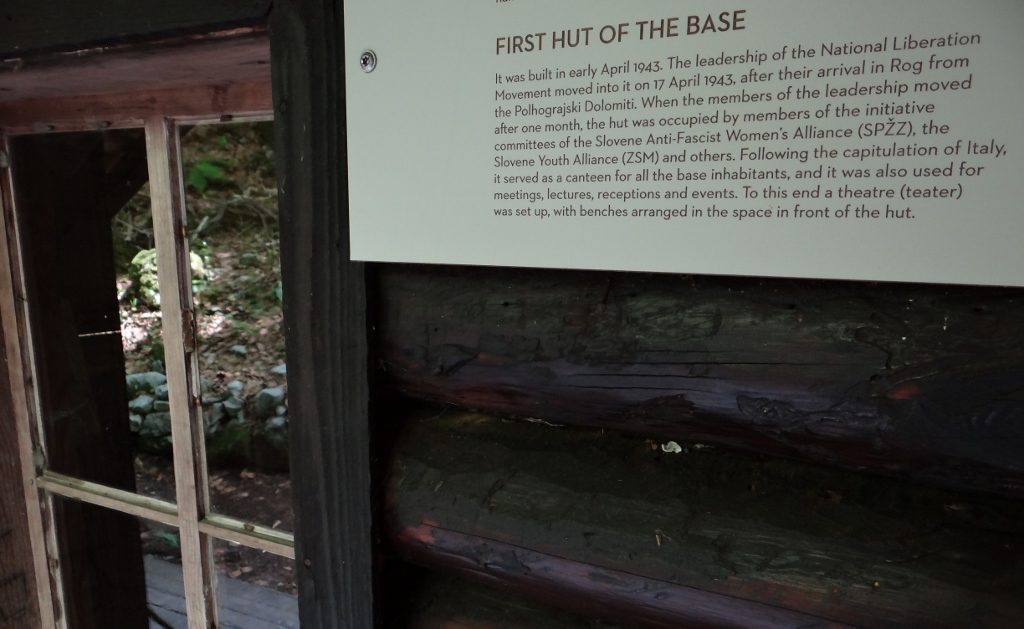
Camp 20
It’s only 4pm as I finish this, but I feel wrung out. The sun’s still lightening patches of Zagan’s innards. Ju’s woken up, and asked if she’s missed the bears. I suspect they only come out at night. Time for a short walk for Charlie to test out his recovered throat.
Cheers, Jay

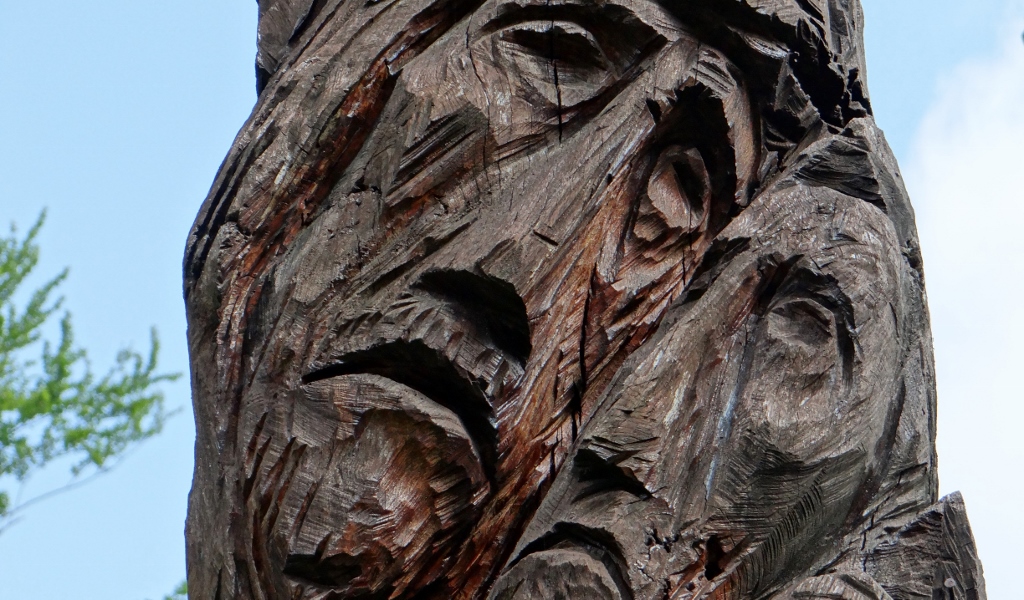


Sounds like you earned a beer/wine. Enlightening, thought-proviking post. Kindest, Wayne. Ps. Look out behind you!
What a very well-written post. Thanks.
Well done Jay
Most informative, if depressing post.
Hope Charlie is feeling better now. We also had to visit a vet yeterday (in Croatia), Bruce has been scratching his tumour on his neck and opened it up. My medical (dog) supplies were running low, but a kindly English speaking vet helped out and in fact changed my treatment slightly. All for £19.
We are loving Croatia. Still working our way round Istria, 2 nights in each place, at this rate it will take ages to get to Dubrovnik……good job we don’t have jobs to go to!!
Amazing were in western Greece and heading up that way, but we think we might give that place a miss! Love reading the blog X julian and Gail (and Maisie who would like to meet Charlie one day!)
Well, depressing posts are allowed to. Very informative. Understand how you feel, even after just reading the thing I feel a bit drained…what the human race is capable of, shame on them!
A beer or wine will help recover? I’ll have a coffee since it’s only 9.30 am.
Know what you mean about feeling wrung out after that sort of discovery! Felt similar after a visit to the Hitler museum, below the Eagles Nest,southern Germany, a couple of years ago. These experiences are always worthwhile though.
Keep up the good work with this blog!
More off-road discoveries? These overweight, front wheel drive vans love it lol